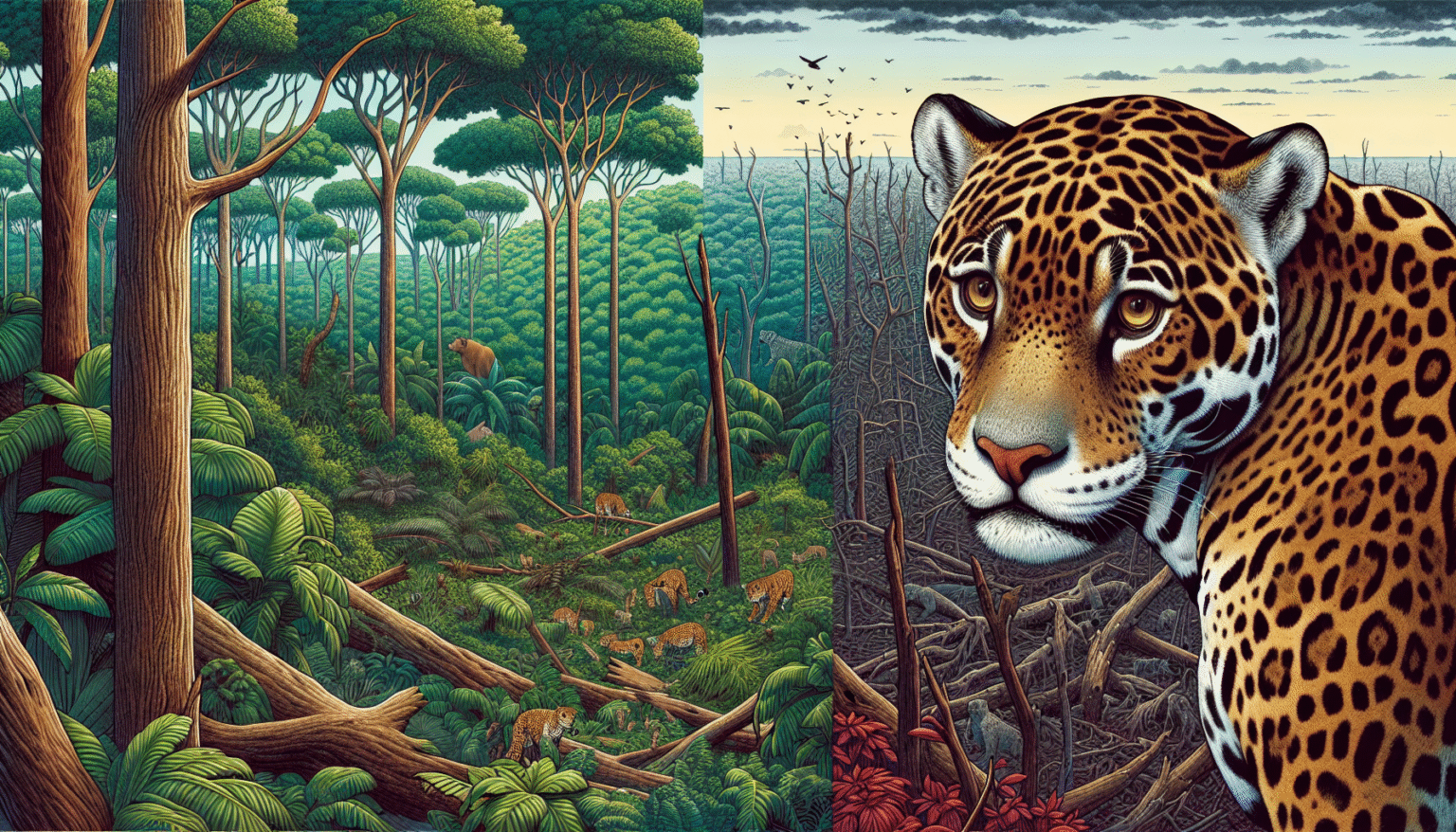The Consequences of Deforestation for Jaguar Populations
Understanding Deforestation
Deforestation refers to the large-scale removal of forest cover, which can occur due to logging, agriculture, urban development, and infrastructure expansion. As one of the leading environmental issues facing the world today, deforestation not only impacts the planet’s carbon cycle but also poses a substantial threat to biodiversity, particularly for species like the jaguar (Panthera onca).
Jaguars: Key Characteristics
Jaguars are the largest cats in the Americas and are primarily found in the tropical forests of Central and South America. They are known for their distinctive coat patterns, strength, and solitary nature. Jaguars play a crucial role in controlling populations of prey species, which helps maintain ecological balance.
Habitat Loss Due to Deforestation
One of the most immediate consequences of deforestation is the loss of habitat. Jaguars rely on dense forest ecosystems for cover, hunting, and breeding. The conversion of forests into agricultural land or urban areas reduces their natural habitat, leading to isolation of populations and diminishing their ability to thrive.
Forest Fragmentation: Deforestation often leads to the fragmentation of their habitat. Fragmented forests isolate jaguar populations, making it difficult for individuals to find mates. This isolation can lead to inbreeding, which reduces genetic diversity and makes populations more vulnerable to disease and environmental changes.
Impact on Prey Availability
Jaguars are apex predators, primarily feeding on a diverse diet that includes deer, capybara, and various smaller mammals. Deforestation alters the population dynamics of prey species. As forests are cleared, prey populations may decline due to habitat loss, overhunting, or scarcity of food. With fewer ungulates and smaller mammals to hunt, jaguars face starvation and a decline in reproductive success.
Food Sources Diminished: The removal of forest canopy decreases the availability of fruits, nuts, and other important food sources for ungulates, which directly impacts their populations. Lower prey density forces jaguars to expend more energy to find food, contributing to a decline in their health and reproductive success.
Increased Human-Jaguar Conflict
As deforestation progresses, jaguars are forced into closer proximity to human settlements. This increased interaction often leads to conflict, particularly when jaguars prey on livestock. Farmers and ranchers may retaliate by killing jaguars, further diminishing their populations.
Incentives for Retributory Killings: The perception of jaguars as threats to livestock creates a cycle of fear and hostility. As farmers incur losses, they may resort to lethal measures, such as trapping or poisoning, which can lead to significant declines in local jaguar populations.
Loss of Biodiversity
Deforestation adversely affects not just jaguars but also the entire ecosystem in which they live. As biodiversity declines, the ecological balance becomes disturbed, leading to greater vulnerability for all species, including jaguars. This reduction in biodiversity can lead to increased parasitism, disease spread, and altered food webs that further threaten jaguar populations.
Ecosystem Services Disrupted: Healthy forests provide numerous services, such as clean water, air purification, and climate regulation. The loss of these services due to deforestation not only affects jaguars but also compromises their habitat, making their survival increasingly precarious.
Climate Change Implications
Deforestation significantly contributes to climate change, releasing substantial amounts of stored carbon into the atmosphere. Climate change poses an increasing threat to jaguars by altering their habitats. Changes in rainfall patterns, temperature increases, and extreme weather events can adversely affect forest health and prey availability.
Change in Habitat Suitability: Jaguars are highly adaptive, yet rapid environmental changes may exceed their capacity to adjust. As climate-driven habitat shifts occur, suitable jaguar habitats may diminish, pushing these big cats into less favorable areas.
Conservation Efforts and Challenges
Effective conservation strategies are crucial for the survival of jaguars amid ongoing deforestation. Initiatives aimed at habitat protection, sustainable land use, and community engagement are essential. However, implementing these strategies faces numerous challenges.
Involvement of Local Communities: Engaging local communities in conservation efforts ensures a shared vision for protecting jaguars and their habitats. This could involve eco-tourism projects that provide economic incentives while promoting habitat preservation.
Legislation and Policy Implementation: Strong environmental policies and stringent enforcement against illegal logging and land conversion must be prioritized to protect existing habitats and promote reforestation.
Preservation of Corridors
Creating wildlife corridors that connect fragmented habitats can enhance jaguar movement and genetic diversity. These corridors allow jaguars to traverse their territory more freely, reduce inbreeding, and improve access to prey.
The Role of Technology in Conservation
Utilizing technology, such as GPS tracking and remote cameras, can enhance the understanding of jaguar behavior and habitat use. Drones can be employed to monitor land use and identify illegal deforestation, thus aiding conservation efforts.
Importance of Ecological Research
Continuous ecological research is necessary to understand the long-term impacts of deforestation on jaguar populations. Gathering data on population dynamics, health, and behavior will help in forming targeted conservation strategies.
Conclusion: The Urgency for Action
While this article does not include a concluding segment, it is important to highlight that the consequences of deforestation for jaguar populations are dire. The intricacies of their ecological roles, habitat loss, prey availability, and human interactions form a complex web that requires urgent attention and action. Collaboration between governments, conservation organizations, and local communities is essential for the future of jaguar populations amid the growing threats of deforestation.







